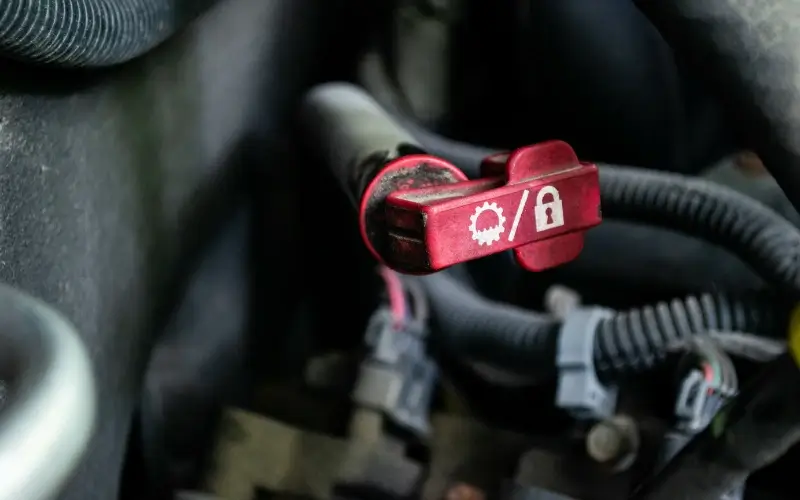How To Change Transmission Fluid: A Guide
15 May 2025

Transmission fluid is one of many driveline fluids that help maintain your vehicle’s transmission and ensure optimum performance. But what is transmission fluid? And how do you check your fluid levels? We answer these questions, and more in the following guide. We’ll cover:
- What is transmission fluid?
- How to check transmission fluid
- How to change transmission fluid
- Where does transmission fluid go?
What is transmission fluid?
Transmission fluid is a hydraulic fluid, essential for the smooth operation of your vehicle’s automatic transmission. It lubricates the gears and clutch packs, reduces friction and heat, and helps regulate temperature inside the transmission system.
This guide primarily focuses on Automatic Transmission Fluid (ATF), which is used in most traditional automatic transmissions. However, it’s worth noting that some vehicles, especially newer models, may use different types of transmissions that require specialised fluids:
CVT Fluid: Used in Continuously Variable Transmissions, which operate with belts and pulleys rather than traditional gears.
DCT Fluid: Used in Dual-Clutch Transmissions, are a hybrid between manual and automatic gearboxes, and require their own formulation.
Always refer to your vehicle owner’s manual to confirm which type of transmission fluid is suitable for the make and model of your vehicle.
How often does transmission fluid need changing?
Changing transmission fluid is not the same as an oil change, as it lasts much longer, so it doesn’t need to be changed as frequently.
Some newer vehicles come with “lifetime” transmission fluid that’s marketed as not needing replacement. However, many experts recommend changing it every 60,000–100,000 miles (97,000-161,000km), especially if the vehicle is used for towing or heavy-duty driving.
Where does transmission fluid go?
Transmission fluid is added to the transmission system, where it lubricates moving parts and helps manage heat. The location of the transmission dipstick depends on your vehicle’s drivetrain layout.
In rear-wheel drive (RWD) vehicles, the dipstick is often found toward the rear of the engine bay near the firewall. In front-wheel drive (FWD) vehicles, it may be located closer to the front or side of the engine bay.
The dipstick handle is usually brightly coloured (often red, yellow, or orange) or marked with a transmission symbol. This is where you check fluid levels and add fluid if necessary. Note that some modern vehicles no longer have a dipstick and require a mechanic or diagnostic tool to check or top up the fluid.

How to check transmission fluid
If you’ve ever checked your oil levels, checking your vehicle’s transmission fluid is very similar and simple to do yourself. Just follow these simple steps to check your transmission fluid levels.
- Start the car and leave the engine running to get the fluid warm and give you a proper reading
- Park your car on a flat, level, surface with the vehicle’s hand brake on. Make sure you are parked in a place where it's safe to do so.
- Locate the transmission fluid dipstick
- Take the dipstick out and wipe it clean
- Remove the dipstick again and check the fluid level reading against the ‘low’ and ‘full’ markings on the dipstick
- If the reading is low then it’s likely that the transmission fluid needs topping up

What are the symptoms of low transmission fluid?
If you think you may have low transmission fluid, you may have noticed a few of these things already. There are a few symptoms of low transmission fluid that you can look out for, if you haven’t checked the transmission fluid levels already.
- Gears slipping or difficulty changing gears
- A delay when shifting from park to drive (in automatic vehicles)
- Grinding or whining when changing gears
Transmission fluid is not the same as gearbox oil as they target different areas. Gear oil is used for manual transmission while transmission fluid is for automatic transmission.
@gulfoilinternational Don’t want some amazing tips and tricks to changing your transmission fluid? Too bad! 💪 Our Today I Learned with Gulf series covers the basics of DIY car maintenance. Episode 8: How do I top up my transmission fluid? #TodayILearned #GulfOil #HowTo #Tips #ForYouPage #MechanicsofTikTok #Tips #Education #OilChange #carcare #transmissionfluid ♬ Trendsetter - Connor Price & Haviah Mighty
How to change transmission fluid
Before you start trying to change your transmission fluid, you should consult your owner manual to learn which specific type of fluid is right for your vehicle. Follow these simple steps to change your transmission fluid:
Step 1
Warm up your vehicle by taking it for a short drive - this will warm the transmission fluid
Step 2
Jack up the vehicle, use jack stands to level it, and make sure it is propped up securely.
Step 3
Look under the vehicle to find the transmission drain plug and place a waste bowl underneath to catch the old transmission fluid.
Step 4
Remove the drain plug so the old fluid can drain into the waste bowl.
Step 5
Replace the plug and check to make sure the transmission fluid pan is not damaged and replace it if it is.
Step 6
Remove and clean the transmission fluid pan and then reattach it.
Step 7
Attach a pneumatic filler to the drain plug and fill it with the correct transmission fluid by pumping it in. Alternatively, if your transmission doesn’t have a filler plug, you may need to refill the fluid through the dipstick tube by using a funnel.
Step 8
When fluid starts coming out, you know it is at the right level. So, wait for it to stop draining and seal the drain plug back up.
Changing your transmission fluid is fairly simple. However, if you don’t have the time, equipment, or the right skills, it might be best to have an expert to do the job. The most important thing to remember is that you’re choosing the right transmission fluid for your vehicle, to ensure its longevity for years to come.

